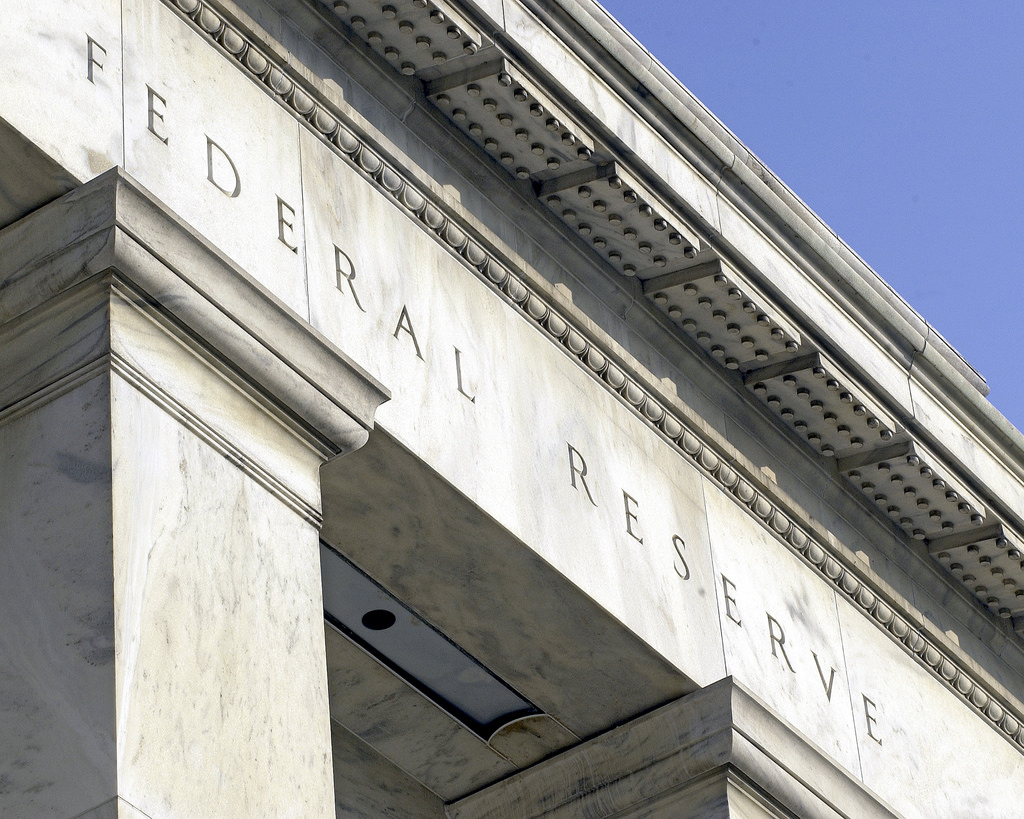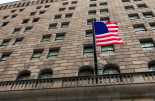Capital Group: Fed's shift on inflation unlikely to send it higher soon
Capital Group: Fed's shift on inflation unlikely to send it higher soon

Key takeaways
- Fed shifts policy to accept inflation above 2% target “for some time”
- Historic shift is unlikely to generate higher US inflation in the near term
- Key US inflation drivers not pointing to higher prices, despite COVID-19 stimulus
US Federal Reserve Chairman Jerome Powell said that the Fed has adopted a policy of “average inflation targeting” — a meaningful shift in the approach to interest rate-setting that has guided the central bank over the past few decades. The change means that when inflation undershoots its 2% target, the Fed will attempt to overshoot the target in ensuing years — essentially accepting higher inflation.
Speaking at the Federal Reserve Bank of Kansas City’s annual Jackson Hole Economic Policy Symposium, Powell said that “following periods when inflation has been running below 2%, appropriate monetary policy will likely aim to achieve inflation moderately above 2% for some time.”
While the Fed’s move is aimed at supporting inflation expectations among households and businesses, could it lead to significantly higher CPI inflation? The answer is most likely “no”, or at least “not yet”, although that does not rule out the potential for asset price inflation. Even as the US has pumped massive monetary and fiscal stimulus in response to the COVID-19 pandemic, fundamental factors that generate inflation are not developing in a manner that suggests it is likely to move substantially higher in the coming quarters.
There are five factors often cited as triggers for inflation:
1. Easy monetary policy and excess money supply growth
Rising inflation did tend to follow accelerating money supply growth from the 1960s to the early 1980s. But since then, the correlation has deteriorated significantly. A rising money supply does not necessarily lead to higher prices if the velocity of money — the number of times a dollar is spent — falls. The rising money supply and falling velocity offset each other, limiting the impact on prices and real economic activity. As the economist Paul Samuelson put it in his 1948 economics textbook: “You can lead a horse to water, but you can’t make him drink. You can force money on the system in exchange for government bonds, its close money substitute; but you can’t make the money circulate against new goods and new jobs.”
Velocity has declined as the private sector’s demand for money has increased. This has resulted from falling inflation expectations, lower interest rates that have reduced the opportunity cost of holding cash, uncertainty and until recently, deleveraging. With declining velocity, money supply growth does not generate faster economic activity. Thus, it does not lead to cause #2: excess demand, high resource utilization, and positive output gaps. Accelerating money supply and easy fiscal policy in the early 1960s caused US private final demand to sustain a very rapid 6.3% rate of growth over a five-year period. This ultimately pushed the US economy’s resource utilization rate — a combination of the capacity utilization rate and employment rate — over 90%, which is well above the roughly 80% that has, at least historically, signalled higher inflation. As a result, CPI inflation rose to 5.9% from 1.2% in the latter half of the 1960s.
2. Fiscal stimulus, excess demand, high resource utilization, and positive output gaps
Of course, US fiscal policy has been very expansionary recently. However, this is intended to backfill a major collapse in demand rather than augment demand in an otherwise fully employed economy. As such, the current level of resource utilization is just below neutral, suggesting neither significant inflationary nor deflationary pressures. However, if an additional round of stimulus is not forthcoming, resource utilization is likely to fall further, creating more downward pressure on inflation.
What about quantitative easing? Commercial bank reserves deposited at the Fed, which have surged due to QE, are part of the monetary base, but not the money supply. To have an impact on the money supply and economic activity, the reserves need to find their way into the real economy via bank lending. Bank lending has picked up recently, but this represents precautionary drawing of credit lines and extension of Paycheck Protection Program loans rather than expanding demand. In fact, primary surveys of lending activity conducted by the Fed show a sharp tightening in lending standards across every loan category by commercial banks, as well as lower demand for loans. Finally, in a regime where the Fed pays interest on excess reserves, banks have even more incentive to keep those reserves on deposit at the Fed.
3. Risk of a “price shock”
The pandemic, in combination with the trade war, has disrupted supply chains, so there is the possibility of cause #3 — a “price shock” occurring with certain goods and services that creates “cost push” inflation. This is what occurred when the energy price shock led to high and lasting inflation in the US in the 1970s and 1980s. However, it is somewhat difficult to envision a price increase of a similar magnitude (184% in 1973-1974 and another 291% by 1980) occurring in a service or commodity, or across enough services and commodities, that it would be as pervasive throughout the US economy as oil was back then. The emergence of the US as a shale producer may also dampen this swing factor.
Additional factors in that earlier period were that the US economy’s utilization rate remained fairly high, and that the price shock impacted inflation cause #4, expectations of inflation, which ultimately caused an outward shift in the Phillips Curve. From 1973 through 1981, the short-run tradeoff between unemployment and inflation occurred at ever higher rates of inflation as high inflation became “built into” the system via wage negotiations, cost-of-living adjustments, and long-term contracts. This fed back into higher prices charged by firms, and then back into wages. In 1982, the curve started moving in the opposite direction and is now flat at a very low level.
Could this happen again? Nothing is impossible, but the US economy is less dependent upon a single service or commodity, the unionized share of the workforce is significantly lower, resource utilization is below neutral and possibly heading lower, and inflation expectations are currently well anchored.
4. Expectations of inflation and inflation regime change
That said, the experience of the 1970s does highlight the importance of expectations remaining contained. In fact, in the subdued inflation regime we have been in, the role of inflation expectations could take on a larger weight than it has in the past. The Fed has long worried about inflation expectations falling below the 2% target and more recently heading toward 1.5%. As such, Powell’s announcement of “average inflation targeting” is not surprising. It is unclear whether this will be an incremental change, or a more disruptive change, or if it will even be successful in the absence of actual inflation. However, that the Fed is now on the cusp of trying, more aggressively, to get inflation expectations to move higher does have the potential to actually raise inflation.
5. Structural factors
Structural factors in the economy – are probably the hardest to calibrate. The US economy is constantly evolving, and these changes can significantly alter structural inflation trends. Most economic models were trained on outputs that were more easily measured. A manufacturing process has a machine; that machine has parts; these parts depreciate; a better machine that makes more things in less time has productivity that is measurable versus the old machine. These capital deepening improvements show up in aggregate GDP statistics, and there is a tangible capital-productivity linkage.
Today, if Amazon creates intellectual capital like an algorithm that automates a warehouse process, it is less clear where or how that IP capital is measured, and how it flows through the GDP accounts. It is highly likely that we are underestimating productivity and overestimating inflation, a problem the US Bureau of Economic Analysis has been aware of for the last five years. Persistent automation trends could lead to higher productivity growth, which would have a dampening impact on inflation trends.
Historically, rising inflation has been associated with lower productivity growth because it leads to rising unit labour costs. However, nearly every post-WWII recession has been directly followed by a quick pick-up in productivity growth, which creates falling unit labour costs in the subsequent two years. If repeated in the current cycle, this would suggest a two-year period of relatively low wage-generated inflation.
One final potential source of inflation not mentioned in the five “causes” is a decline in the US dollar, as changes in the value of the currency feed into US import prices pretty directly. However, the US economy is less exposed to imports than many other countries’ economies, at around 16% of GDP, so it takes a pretty significant decline in the currency to have an impact on the overall rate of US inflation.
Granted, the above analysis looks back at history, which contains virtually no precedent for what is occurring today. However, in the near term, the pandemic appears to be putting downward pressure on economic activity despite the fiscal and monetary efforts to prop it up. This seems like a very difficult environment in which to generate inflation. However, it will be important to monitor how persistent fiscal and monetary stimulus remains as we exit the current situation. Policy that stays as accommodative as it has been in an economy that is “normalizing” does have some potential to generate inflation.
Darrell R. Spence is an economist at Capital Group. He has 27 years of investment industry experience, all with Capital Group. He holds a bachelor’s degree with honours in economics from Occidental College graduating cum laude, and is a member of Phi Beta Kappa and Omicron Delta Epsilon. He also holds the Chartered Financial Analyst® designation and is a member of the National Association for Business Economics.







